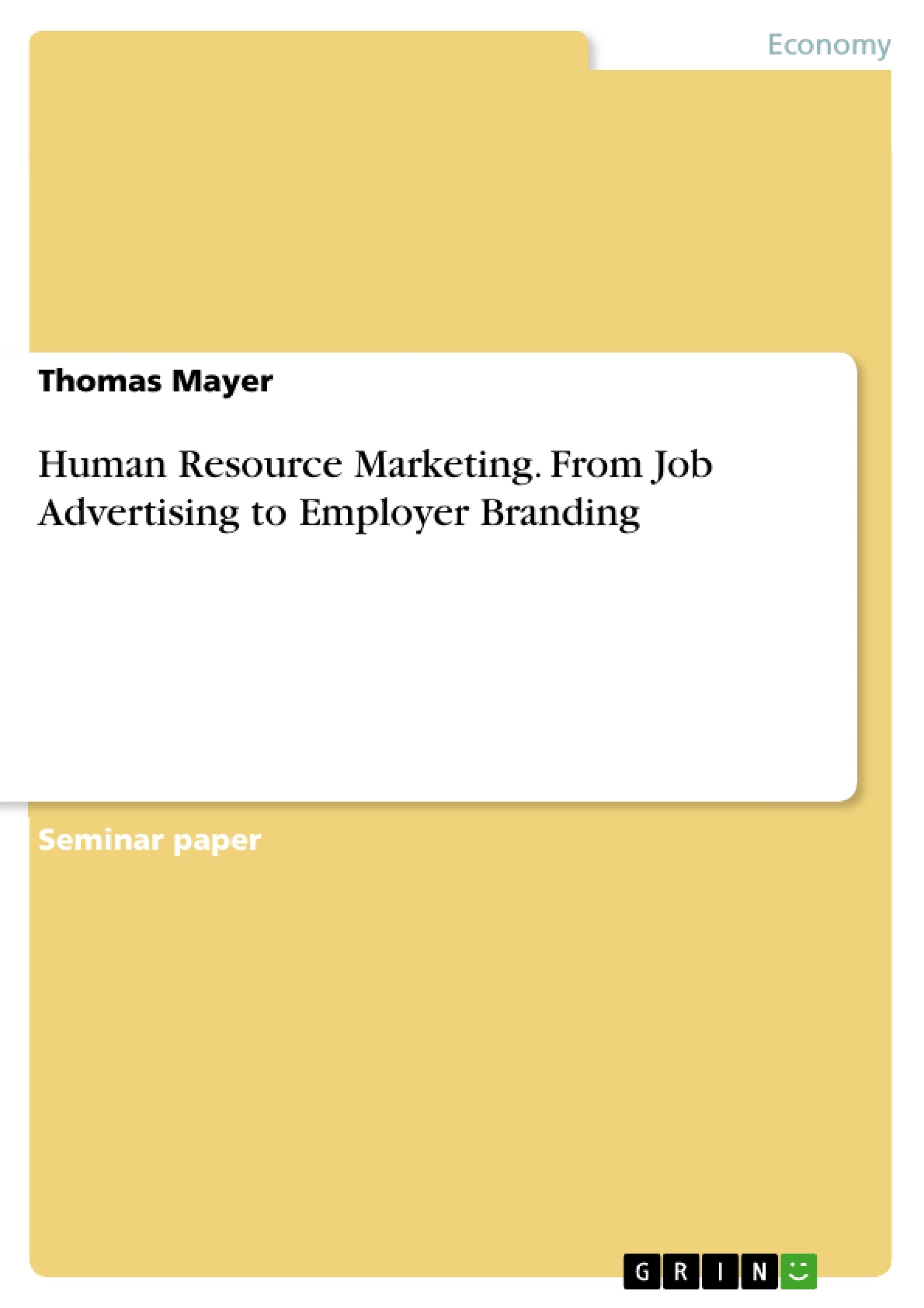This paper describes the change in Human Resource Marketing from classical, established Job Advertisement to a relatively novel complementary approach, called Employer Branding.
The work will discuss common vehicles of Job Advertisement utilized in the past and today and then advance to define and describe the process of Employer Branding used by companies and institutions to cope with the challenges comprised in the 21st Century labor market.
The findings documented in this work are important to better understand mechanisms of HR-Marketing and the connection between internal and external branding and its implications on not only recruitment, but also on motivation, engagement and retention of current and prospective employees.
“This generation will turn employment-culture inside out radically” Anders Parment, a lecturer at Stockholm Business School stated. The quote is aimed at Generation-Y.
Generation-Y, defined as being born in the 1980s and 1990s, is increasingly represented in the labor-market, displacing the previous generation of „Baby-Boomers‟2 who were born in the time following WWII.
This work will look at means of job advertising that worked well with the Baby-Boomers and go on to show how HR-Marketing is changing in order to satisfy the needs of this new generation which grew up with digital-media and social networks.
Inhaltsverzeichnis (Table of Contents)
- Executive Summary
- Table of Contents
- List of Abbreviations
- List of Figures
- Introduction
- Problem Definition
- Objectives
- Methodology
- Main Part
- Job Advertising
- Word-of-Mouth / Direct-Advertising
- Print Media Advertising
- Online Advertising
- HR Consulting Agents and Companies
- Job-Fairs
- Employer Brand and Employer Branding
- TV-Commercials and Documentaries
- Workshops
- External Surveys
- Employer´s Products and Market-Position
- Leadership and Corporate-Culture
- Job Advertising
- Results
- The Importance of Employer Branding
- Conclusion
- Integral Total Management Checklist
- Bibliography
Zielsetzung und Themenschwerpunkte (Objectives and Key Themes)
This paper investigates the evolution of Human Resource Marketing, specifically highlighting the shift from traditional job advertising to the contemporary approach of Employer Branding. The work examines historical and current job advertisement practices, delves into the definition and processes of Employer Branding, and ultimately aims to understand the relationship between internal and external branding.
- The changing landscape of HR-Marketing in the 21st century
- The role of Employer Branding in attracting, motivating, and retaining talent
- The importance of aligning internal and external brand perceptions
- The impact of demographic shifts and generational differences on HR-Marketing strategies
- The benefits of a holistic approach to HR-Marketing, encompassing both traditional and contemporary practices
Zusammenfassung der Kapitel (Chapter Summaries)
The work begins by introducing the concept of Generation-Y and its influence on the labor market. It then outlines the problem statement, which focuses on the need for more comprehensive HR-Marketing strategies in the digital age. The subsequent chapter details the objectives of the paper, which aim to showcase the evolution of job advertising to encompass more complex HR-Marketing approaches.
The main part of the work delves into common job advertising methods, exploring traditional strategies such as word-of-mouth, print media, and online advertisements, as well as utilizing services from HR-Consulting firms and job fairs. It then transitions to the concept of Employer Branding, defining the Employer Brand and the process of Employer Branding. This section discusses the role of internal and external brand consistency, with a focus on the importance of bridging the gap between perceptions and reality. Various initiatives and attributes for building and maintaining an Employer Brand are then outlined, including TV-commercials, documentaries, workshops, external surveys, the influence of a company's products and market position, and the impact of leadership and corporate culture.
The results section highlights the importance of Employer Branding in the 21st century, emphasizing the need for a holistic approach to HR-Marketing to navigate the "War for Talent." The chapter concludes by examining the significance of Employer Branding in attracting, retaining, and motivating talent, as well as its influence on external brand success.
Schlüsselwörter (Keywords)
The primary focus of this work revolves around HR-Marketing, encompassing both traditional job advertising and the emerging concept of Employer Branding. It explores the impact of demographic shifts and generational differences on the labor market, emphasizing the importance of aligning internal and external brand perceptions to attract, retain, and motivate talent. Key terms and concepts include: Generation-Y, Employer Branding, Employer Brand Management, "War for Talent," and the psychological contract.
- Quote paper
- Thomas Mayer (Author), 2011, Human Resource Marketing. From Job Advertising to Employer Branding, Munich, GRIN Verlag, https://www.hausarbeiten.de/document/304591



